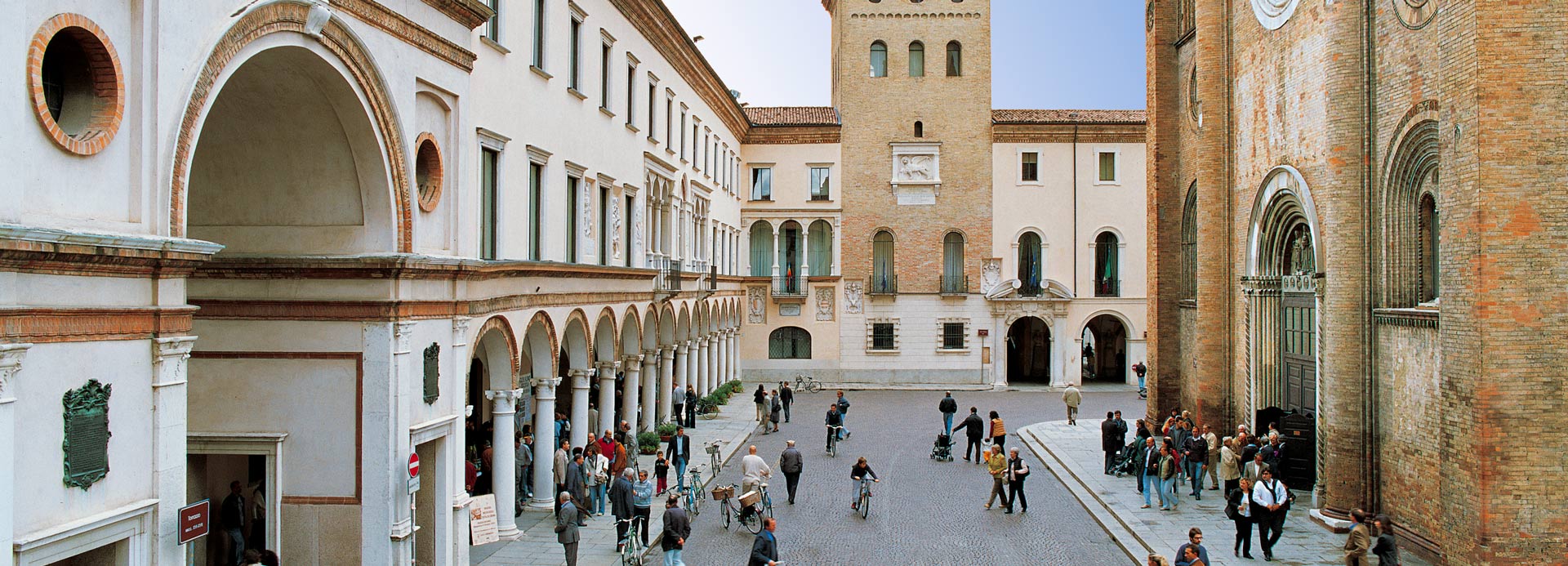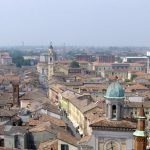 Tutti i luoghi
Tutti i luoghi
Da collegio dei Notai a sede della Diocesi
The current Bishop’s Palace came into being in 1548, as the palace of the colleges of notarists, jurists and merchants, completing the piazza on the northern side of the Duomo, or cathedral. Following this, the palace was given to the community as the seat of the Bishop of Crema, by the Venetian nobleman Gerolamo Diedo, in order to provide a suitable residence. The palace is in fact mentioned in Pope Gregory XIIIth’s Papal Bull dated 11th April 1580, which institutes the diocese of Crema.
The facade is in the Renaissance Lombard style and can be distinguished in two parts, the lower being a portico which echoes that of the town hall, along with similar brickwork decorations. The upper section has a double series of five windows, the higher series having ‘eyes’ or apertures above them. The marble balcony in the centre of the facade was added in 1936, the same year which saw the demolition of an extension of the palace which had been built on the orders of Gian Giacomo Diedo, the second bishop of Crema in 1584.

The extension had stood along the north side of the Duomo with a small facade and a balcony for public blessings. The coats of arms on either side of the french-windows display some distinctive ornamental features, such as the typical bishop’s hat of the time. These coats of arms belonged to the Diedo and Emo families of the Venetian patriciate, from which the first bishops of Crema descended. Painted script can still be seen on some of the columns similar to some of the columns of the town Hall.

This script was printed using a very strong colour which has lasted over the centuries and is a homage to Nicolò Donado, who was elected to power in 1575 in the period when the palace still belonged to the community.

Info
Piazza Duomo, 27













